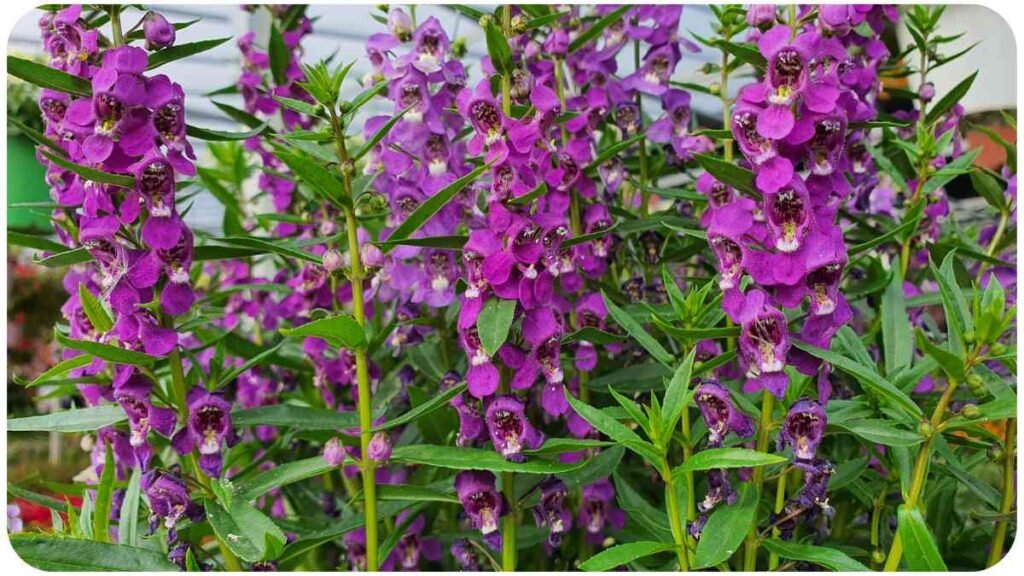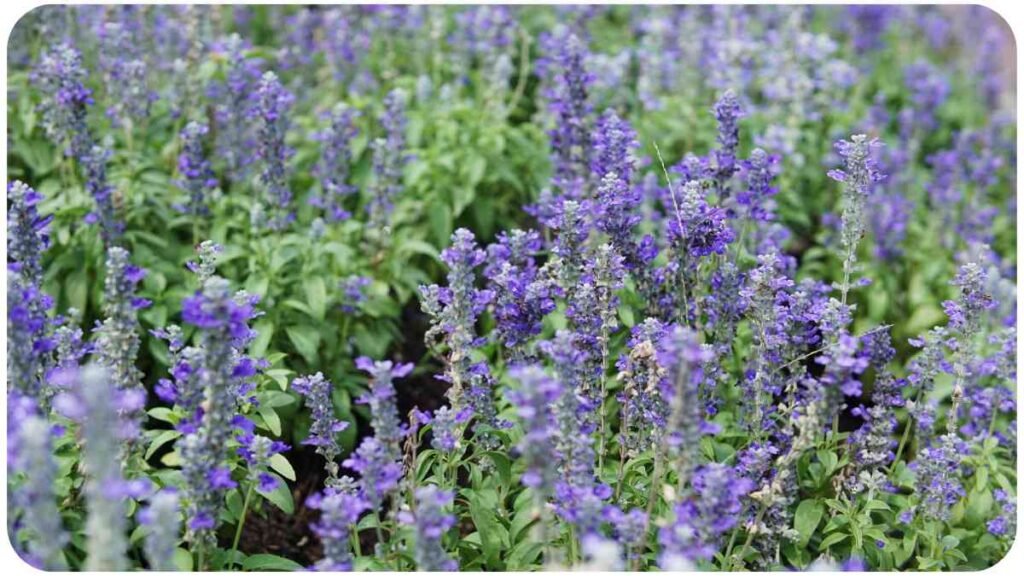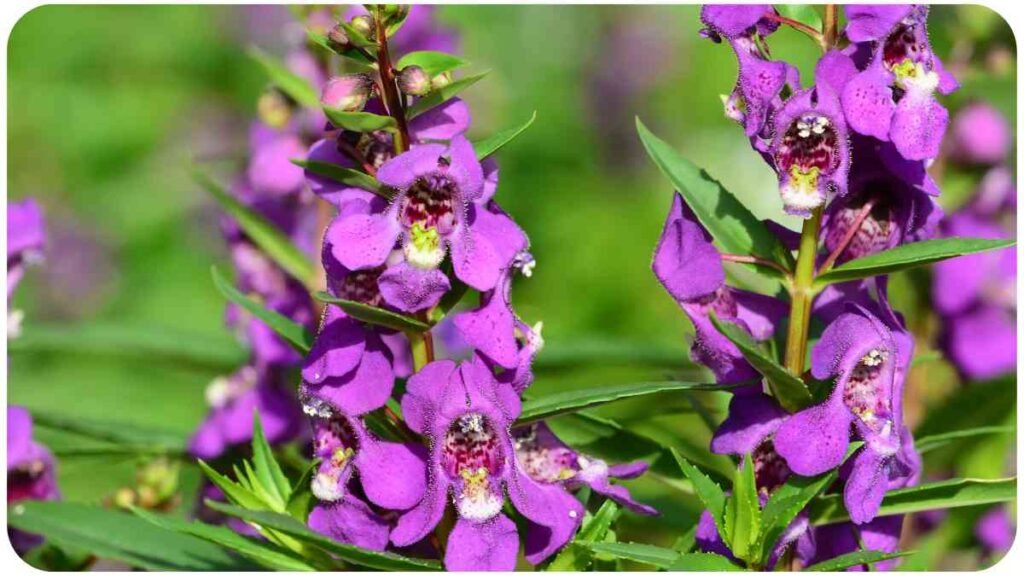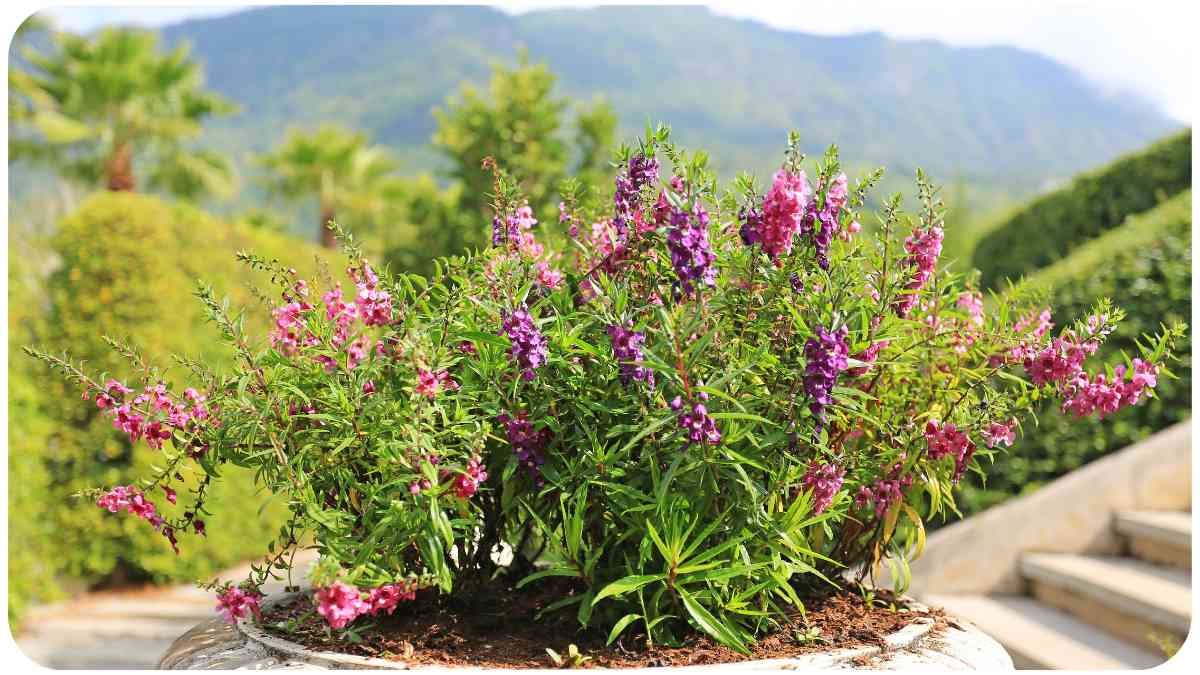If you’ve noticed your once-vibrant Angelonia plant wilting or showing signs of distress, don’t despair just yet.
This comprehensive guide explores the six common reasons why your Angelonia might be struggling and provides actionable solutions to revive your green companion.
| Takeaways |
|---|
| 1. Proper Care is Essential: Understand the specific needs of Angelonia for optimal care. |
| 2. Mind Your Watering: Overwatering is a common issue; let the soil dry between waterings. |
| 3. Sunlight is Vital: Ensure your Angelonia gets the recommended amount of sunlight. |
| 4. Nutrient Balance Matters: Fertilize with a balanced mix to provide essential nutrients. |
| 5. Prompt Action for Pests: Swiftly address pests and diseases to prevent damage. |
| 6. Smart Planting Practices: Follow recommended planting practices for a thriving Angelonia. |
| 7. Expert Guidance Helps: Seek advice from experienced gardeners or professionals. |
| 8. Success Stories Inspire: Learn from others who have successfully revived their Angelonia. |
| 9. Regular Inspection is Key: Keep a close eye on your plant for early issue detection. |
| 10. Tailor Care to Your Plant: Individual plants may have unique needs; observe and adjust care accordingly. |
Understanding Angelonia

Before diving into the reasons behind your Angelonia’s decline, let’s understand this delightful plant. Angelonia, also known as Summer Snapdragon, is prized for its striking blooms and resilience in various climates. However, like any living organism, it requires specific care to thrive.
Discover the secrets to banishing dryness and restoring lush greenery in your lemon cypress with this comprehensive guide. Ensure your lemon cypress thrives and regains its vibrancy.
Signs of a Dying Angelonia Plant
Identifying the symptoms is the first step to nursing your Angelonia back to health. Keep an eye out for wilting, yellowing leaves, or stunted growth. If you notice any of these signs, read on to uncover the potential culprits.
Overwatering Woes
One of the most common mistakes in Angelonia care is overwatering. While these plants enjoy a good drink, drowning their roots can lead to disastrous consequences.
Dive into a comprehensive guide on understanding and addressing the issue of a drooping rattlesnake plant. Unravel the mysteries behind the droop and revive your rattlesnake plant to its full glory.
Signs of Overwatering
| Symptom | Description |
|---|---|
| Wilting despite moisture | Leaves appear limp even when the soil is moist. |
| Yellowing leaves | Excessive water can cause the leaves to turn yellow. |
| Root rot | Overwatering creates a breeding ground for root rot. |
To avoid overwatering, ensure proper drainage and let the topsoil dry out between waterings.
Sunlight Starvation
Angelonia plants are sun lovers, and insufficient sunlight can hinder their growth and overall well-being.
Sunlight Requirements for Angelonia
| Light Level | Description |
|---|---|
| Full sun (6+ hours) | Angelonia thrives in full sunlight. |
| Partial shade | Some varieties tolerate partial shade, but full sun is preferable. |
Ensure your Angelonia receives the recommended amount of sunlight for a healthy and robust display of blooms.
Soil Issues
The type of soil your Angelonia is planted in plays a crucial role in its vitality. Issues with soil quality can impede proper nutrient absorption and root development.
Ideal Soil Conditions
| Soil Component | Description |
|---|---|
| Well-draining soil | Ensures water doesn’t pool around the roots. |
| pH level (6.0-7.5) | Angelonia prefers slightly acidic to neutral soil. |
Regularly check your soil’s drainage and pH, amending it as needed to create an optimal environment for your plant.
Unlock the mystery behind why your ice plant might not be blooming. This insightful guide provides tips and solutions to ensure your ice plant blossoms with vibrancy and beauty.
Pests and Diseases
Unwanted visitors and diseases can wreak havoc on your Angelonia if not addressed promptly. Vigilance is key to keeping your plant pest-free.
Common Pests and Diseases
| Pest/Disease | Symptoms |
|---|---|
| Aphids | Sticky residue on leaves, distorted growth. |
| Spider mites | Webbing on leaves, yellow stippling. |
| Powdery mildew | White powdery spots on leaves. |
Regularly inspect your Angelonia for signs of pests and diseases, and take appropriate measures for prevention and treatment.
Root Rot Realities
Root rot is a common issue, especially when overwatering is involved. Understanding how to prevent and address root rot is crucial for the well-being of your Angelonia.
Cultivate a flourishing Cryptomeria Globosa Nana with this detailed guide. Learn the essential steps to ensure your plant not only survives but thrives, adding elegance to your garden.
Preventing and Treating Root Rot
| Prevention/Treatment | Description |
|---|---|
| Well-draining soil | Avoid waterlogged conditions to prevent root rot. |
| Adjust watering habits | Allow the soil to dry out between waterings. |
| Fungicide application | Use a suitable fungicide if root rot is detected. |
Addressing root rot promptly can save your Angelonia from a severe decline.
Nutrient Deficiency Dilemmas

Angelonia plants, like all living organisms, require specific nutrients to thrive. A lack of essential elements can manifest in various symptoms, signaling a nutrient deficiency.
Essential Nutrients for Angelonia
| Nutrient | Function |
|---|---|
| Nitrogen (N) | Promotes leafy, green growth. |
| Phosphorus (P) | Supports flower and root development. |
| Potassium (K) | Aids in overall plant health and disease resistance. |
Regularly fertilize your Angelonia with a balanced fertilizer to ensure it receives the necessary nutrients for optimal growth and vitality.
Improper Planting Practices
How you plant your Angelonia can significantly impact its health and longevity. Avoiding common planting mistakes is crucial for fostering a thriving plant.
Elevate your gardening game with a guide on cultivating success through a no-till garden. Explore innovative gardening practices that lead to healthier and more resilient plants, transforming your garden into a haven of greenery.
Planting Do’s and Don’ts
| Practice | Description |
|---|---|
| Do plant at the right depth | Ensure the roots are covered but not buried too deeply. |
| Don’t overcrowd | Provide ample spacing between Angelonia plants for proper air circulation. |
| Do mulch | Mulching helps retain soil moisture and suppresses weeds. |
| Don’t neglect drainage | Ensure proper drainage to prevent waterlogged soil. |
Following proper planting practices contributes to a healthy and flourishing Angelonia.
Troubleshooting Tips

If you’ve identified one or more issues affecting your Angelonia, implementing quick and effective solutions is vital to its recovery. Let’s explore some troubleshooting tips for common problems.
Quick Solutions for Dying Angelonia
| Problem | Solution |
|---|---|
| Wilting due to overwatering | Allow the soil to dry out before watering again. |
| Yellowing leaves | Adjust the watering schedule and ensure proper drainage. |
| Pest infestation | Use insecticidal soap or neem oil to control pests. |
| Root rot | Trim affected roots, repot in fresh soil, and adjust watering. |
| Nutrient deficiency | Fertilize with a balanced fertilizer containing N-P-K. |
Implementing these quick solutions can make a significant difference in reviving your struggling Angelonia.
Expert Advice
Seeking guidance from experts in the field can provide valuable insights into specific challenges and advanced care tips for your Angelonia.
Expert Recommendations
| Expert | Advice |
|---|---|
| Dr. Green Thumb | “Ensure your Angelonia gets adequate sunlight and proper watering.” |
| Plant Whisperer | “Regularly inspect for pests, addressing them promptly to prevent damage.” |
Listening to the wisdom of experienced professionals can be a game-changer in maintaining a thriving Angelonia.
Success Stories
Let’s draw inspiration from the success stories of fellow plant enthusiasts who have overcome challenges and revived their Angelonia.
Reader Success Stories
| Gardener | Challenge faced | Success strategy |
|---|---|---|
| BloomingBotanist | Overwatering leading to root rot. | Adjusted watering, trimmed affected roots, and repotted. |
| SunshineGardens | Nutrient deficiency causing yellowing leaves. | Fertilized with a balanced fertilizer, saw improvement within weeks. |
These success stories showcase that with the right knowledge and actions, your Angelonia can bounce back to its full glory.
Conclusion
In the world of gardening, understanding the unique needs of your plants is paramount to their well-being. If you’ve been wondering, “Why is my Angelonia plant dying?” this guide has equipped you with insights into potential issues and practical solutions.
By addressing overwatering, ensuring proper sunlight, maintaining ideal soil conditions, and tackling pests and diseases promptly, you can give your Angelonia the care it deserves. Remember the importance of nutrient balance, proper planting practices, and seeking expert advice when needed.
As you embark on the journey of reviving your Angelonia, take inspiration from the success stories of fellow gardeners who faced similar challenges but emerged victorious through dedication and smart gardening practices.
Further Reading
- Greeny Gardener – Angelonia Wilting: Explore this comprehensive guide on reasons behind Angelonia wilting and discover practical tips to address the issue.
- PictureThis AI – Angelonia angustifolia: Delve into the detailed wiki on Angelonia angustifolia, offering insights into its characteristics, care, and cultivation.
- Gardenia – Angelonia Plant Care and Growing Guide: Learn valuable information about Angelonia care and cultivation from this extensive guide provided by Gardenia.
FAQs
What are the common signs of overwatering an Angelonia plant?
Overwatering can manifest in wilting despite moisture, yellowing leaves, and the development of root rot. Ensure proper drainage and adjust your watering schedule to prevent these issues.
How much sunlight does an Angelonia plant require?
Angelonia plants thrive in full sunlight, requiring at least 6 hours of direct sunlight daily. Some varieties can tolerate partial shade, but optimal growth is achieved in full sun.
What type of soil is best for Angelonia?
Angelonia prefers well-draining soil with a slightly acidic to neutral pH (around 6.0-7.5). This helps prevent waterlogged conditions and ensures proper nutrient absorption.
How can I prevent and treat root rot in my Angelonia?
To prevent root rot, use well-draining soil, adjust your watering habits to allow the soil to dry between waterings, and consider applying a suitable fungicide if needed. Trimming affected roots during treatment is crucial.
What nutrients does an Angelonia plant need for healthy growth?
Angelonia requires essential nutrients such as nitrogen (N) for leafy growth, phosphorus (P) for flowers and roots, and potassium (K) for overall health and disease resistance. Regularly fertilize with a balanced fertilizer containing these nutrients.

Hellen James, a seasoned author at Unified Publishers LLC, brings a wealth of expertise to diverse niches. Specializing in pet care, outdoor adventures, lifestyle, wellness, and culinary delights, Hellen crafts insightful and engaging content that unlocks the full potential of readers’ interests. Explore, learn, and thrive with Hellen James.

